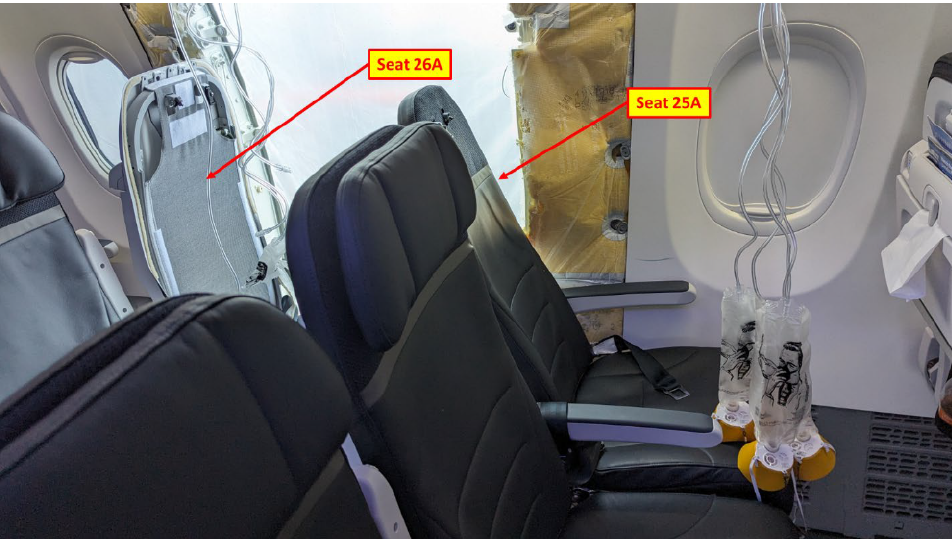Boeing Max and the Case of the Missing Bolts
The National Transportation Safety Board released its preliminary report earlier this week on the midflight door plug separation on Alaska Airlines Flight 1282, and I am sure I’m not alone…

A photo of the accident airplane from the NTSB preliminary report [NTSB]
The National Transportation Safety Board released its preliminary report earlier this week on the midflight door plug separation on Alaska Airlines Flight 1282, and I am sure I'm not alone in wondering if there are some proverbial screws loose between point A and point B in aircraft production.
On January 5, a door plug separated from the frame of an Alaska Airlines Boeing 737 Max 9 as it climbed through 16,000 feet. The flight crew was able to report the emergency to ATC and land the aircraft—and only minor injuries were reported.
Aviation has grown increasingly safe over the past few decades, with safety records ticking up steadily to the point that it’s statistically less dangerous to take a commercial flight across the planet than to get in your car and drive to the next city. General aviation isn’t quite at that level, although safety numbers on that front have been climbing as well—an aging GA fleet accessible to the majority of pilots notwithstanding. This incident would seem to be a warning call to remind us that aviation is safe because we work so hard to make it so.
But apparently there were warnings before this for this particular aircraft. According to the NTSB’s preliminary report, the aircraft had experienced pressurization problems on December 30, just a few days before the door plug blew out.
Without knowing all of the details, I can’t comment on this particular case.
But the whole scenario has me thinking a lot in general about the human factors of aviation and the checks we use to protect ourselves and others in the air. We have developed these checks with the full understanding that human beings are fallible and subject to pressures that can lead, at times, to bad decision-making.
In fact, the recognition of human factors in aviation dates to its early days when accidents were often attributed solely to technical failures. Over time, it became evident that human error caused a significant number of accidents. This realization led to the establishment of human-related factors as a distinct field within aviation, with a focus on studying and mitigating the impact of those issues.
To help mitigate this fallibility, professionals in aviation go through rigorous training and testing. They must use checklists. And they are required to make decisions that occasionally put personal interest (or at scale, economic interest) behind scrapping a flight because the risk is just too high, whether because of a potential maintenance issue, weather, or a crewmember just can’t hack it that day.
Economic considerations in aviation are not small. Sometimes the safety of a flight is weighed against the commercial ramifications of failing to complete it. And that is powerful medicine, especially when risk looks somewhat abstract from the ground. However, pressure to complete a flight or project on schedule or within a particular budget should never eclipse safety considerations.
It’s always worthwhile to slow down, investigate, and triple-check that our T’s are crossed and I’s dotted. We can’t allow all of the safe flights we’ve had before lead to complacency.
Aviation is made safe by people committing to following established procedures, double-checking everything, and putting the safety of a given flight above commercial concerns or other social or psychological pressures. It takes strength to do this, but it’s so vital. In commercial aviation or general aviation, we should trust—but always verify.

Subscribe to Our Newsletter
Get the latest Plane & Pilot Magazine stories delivered directly to your inbox






